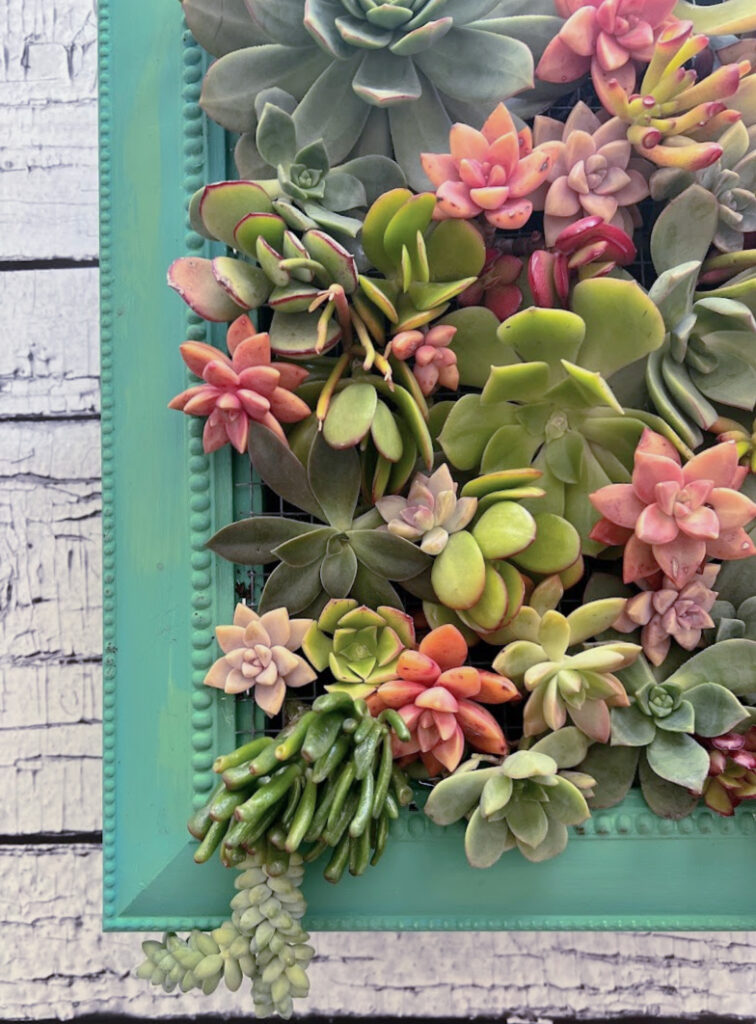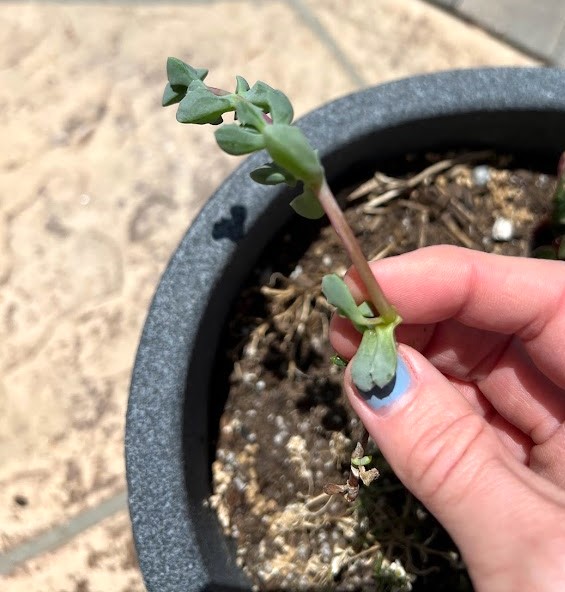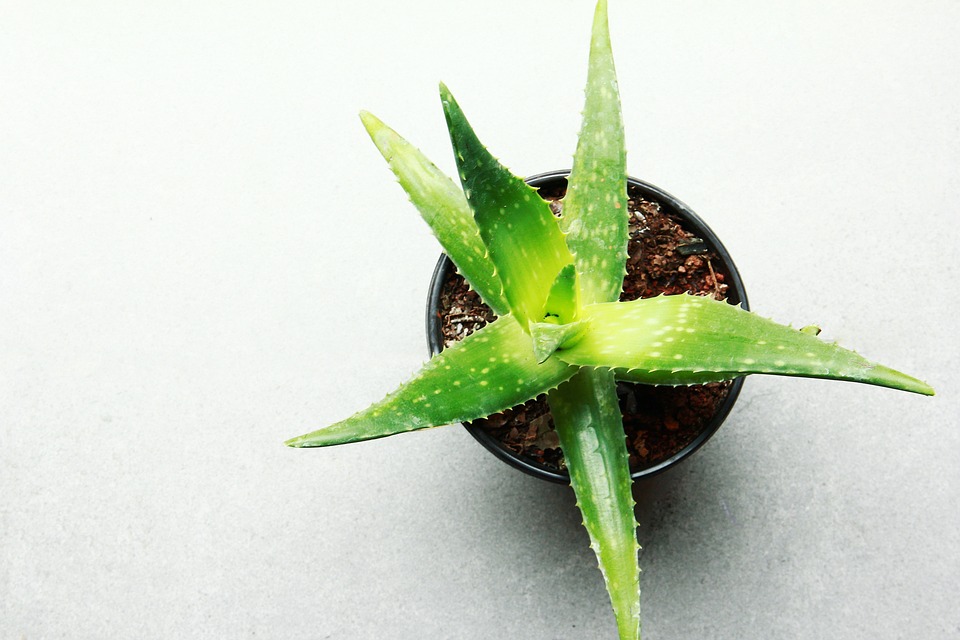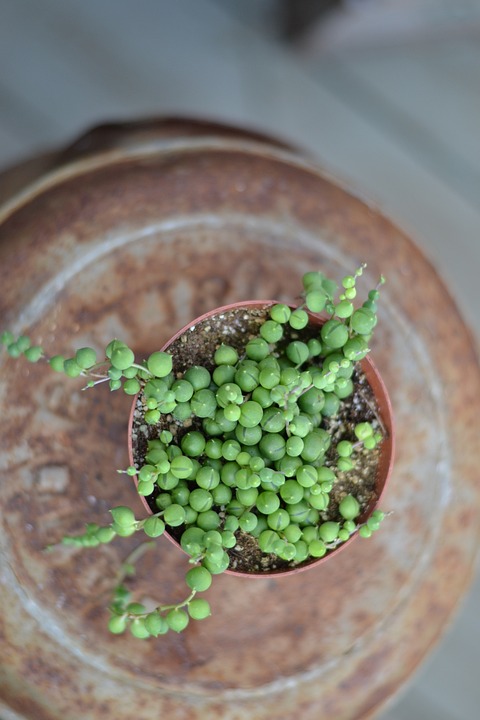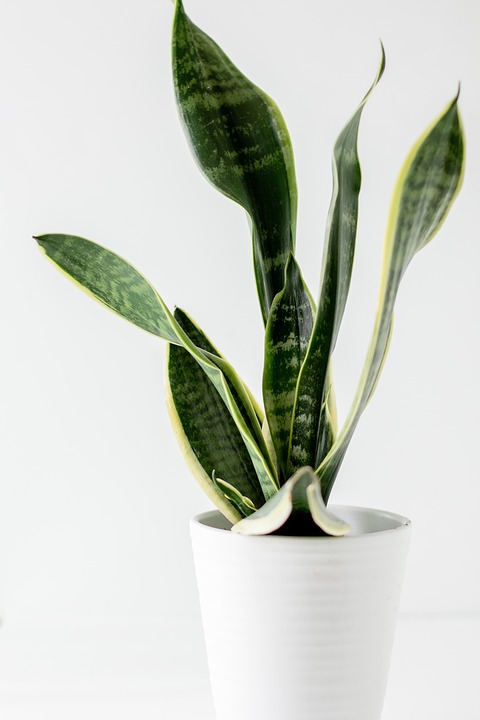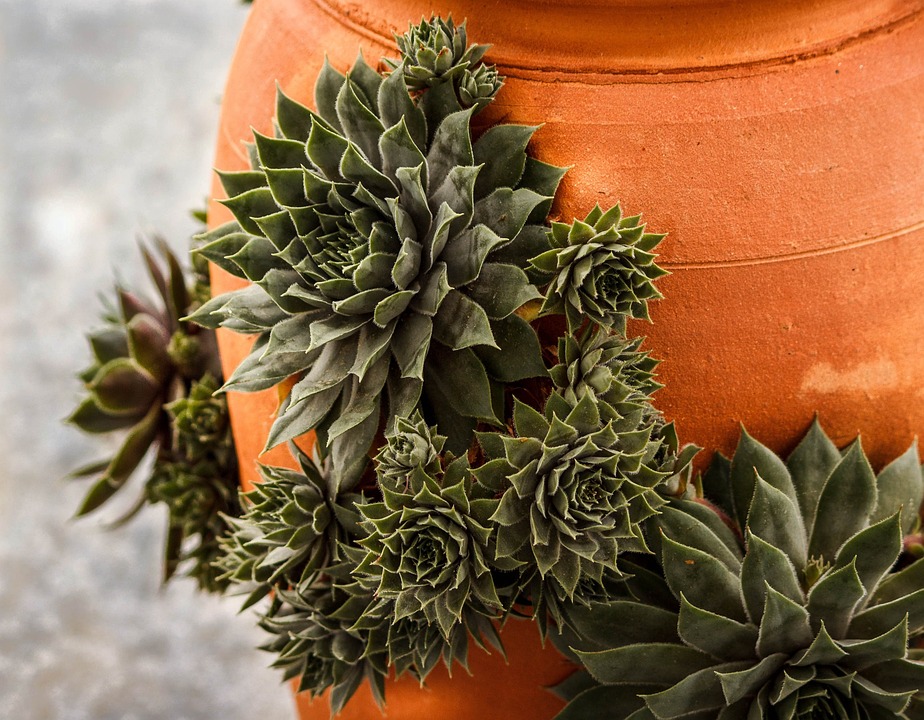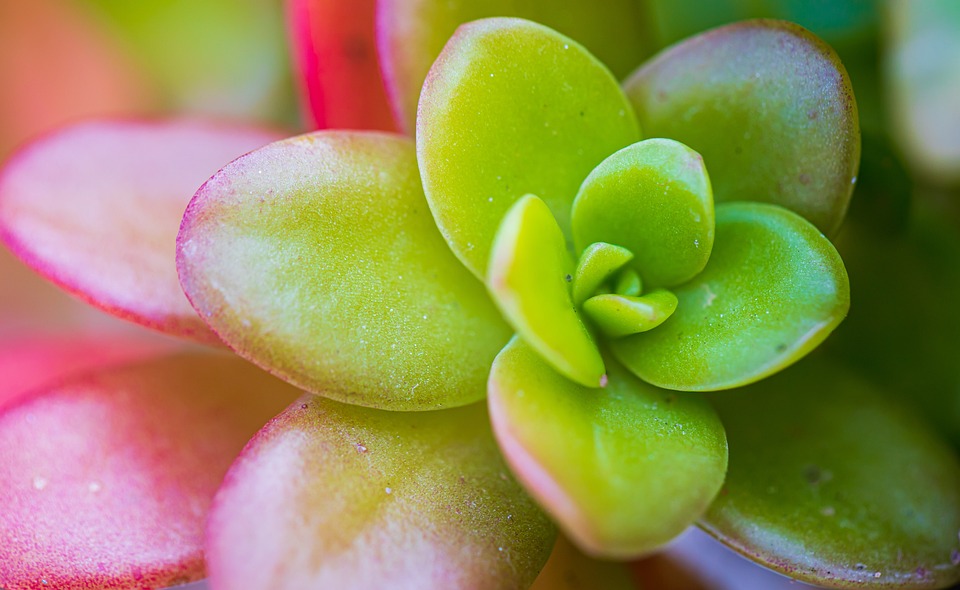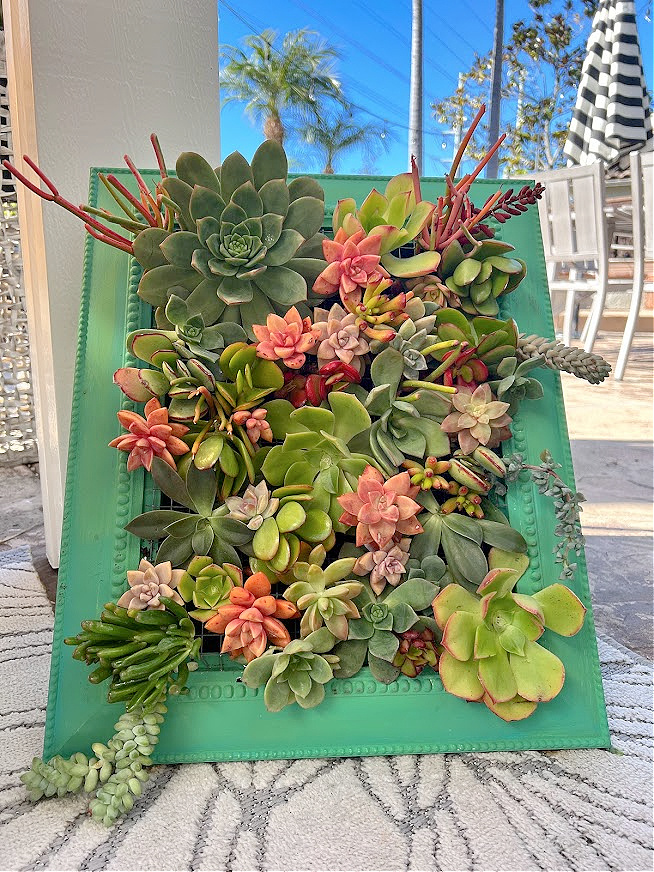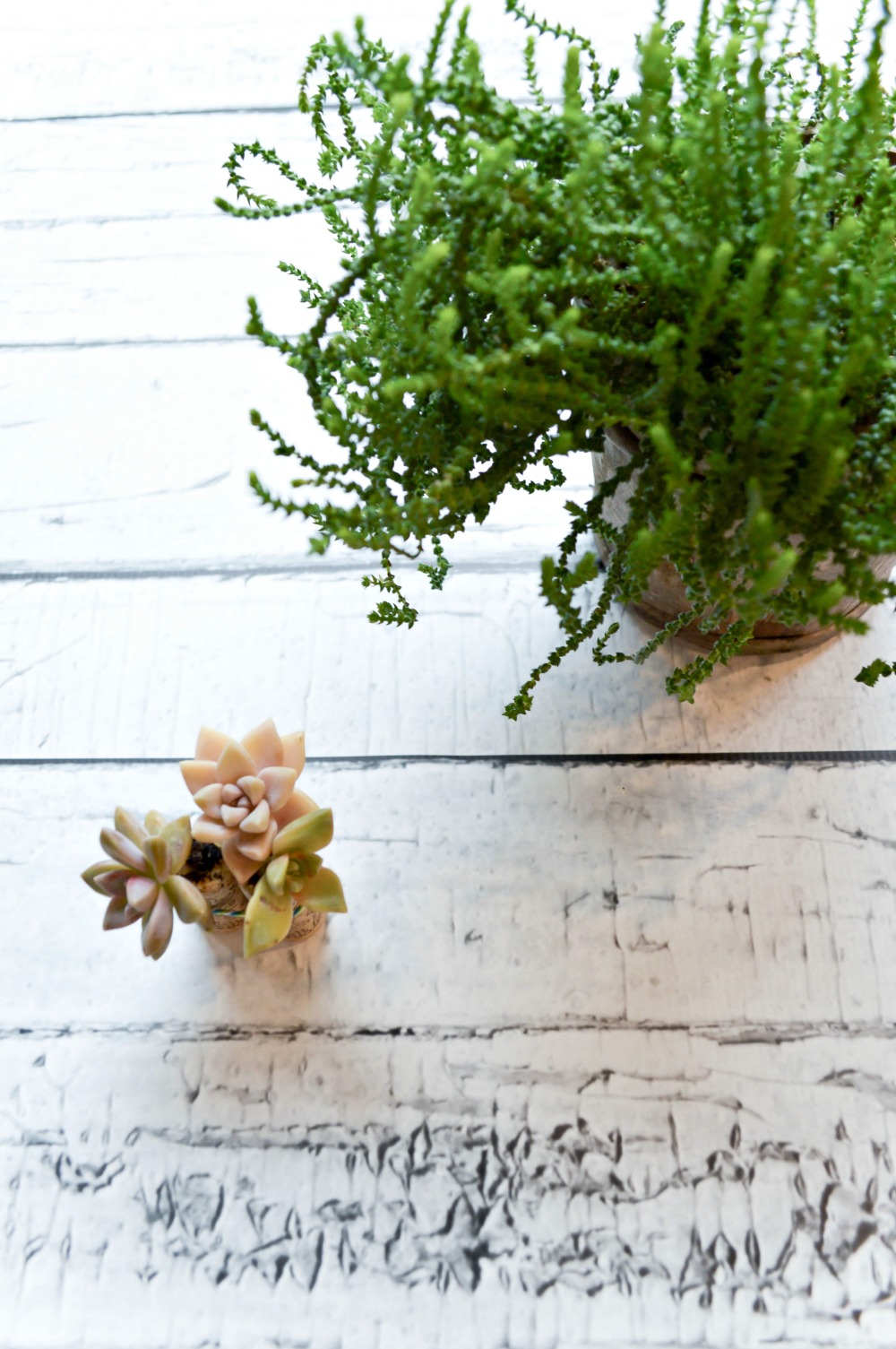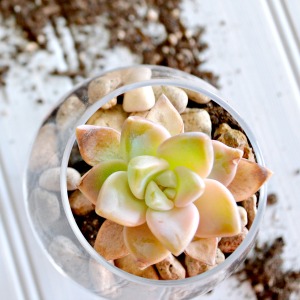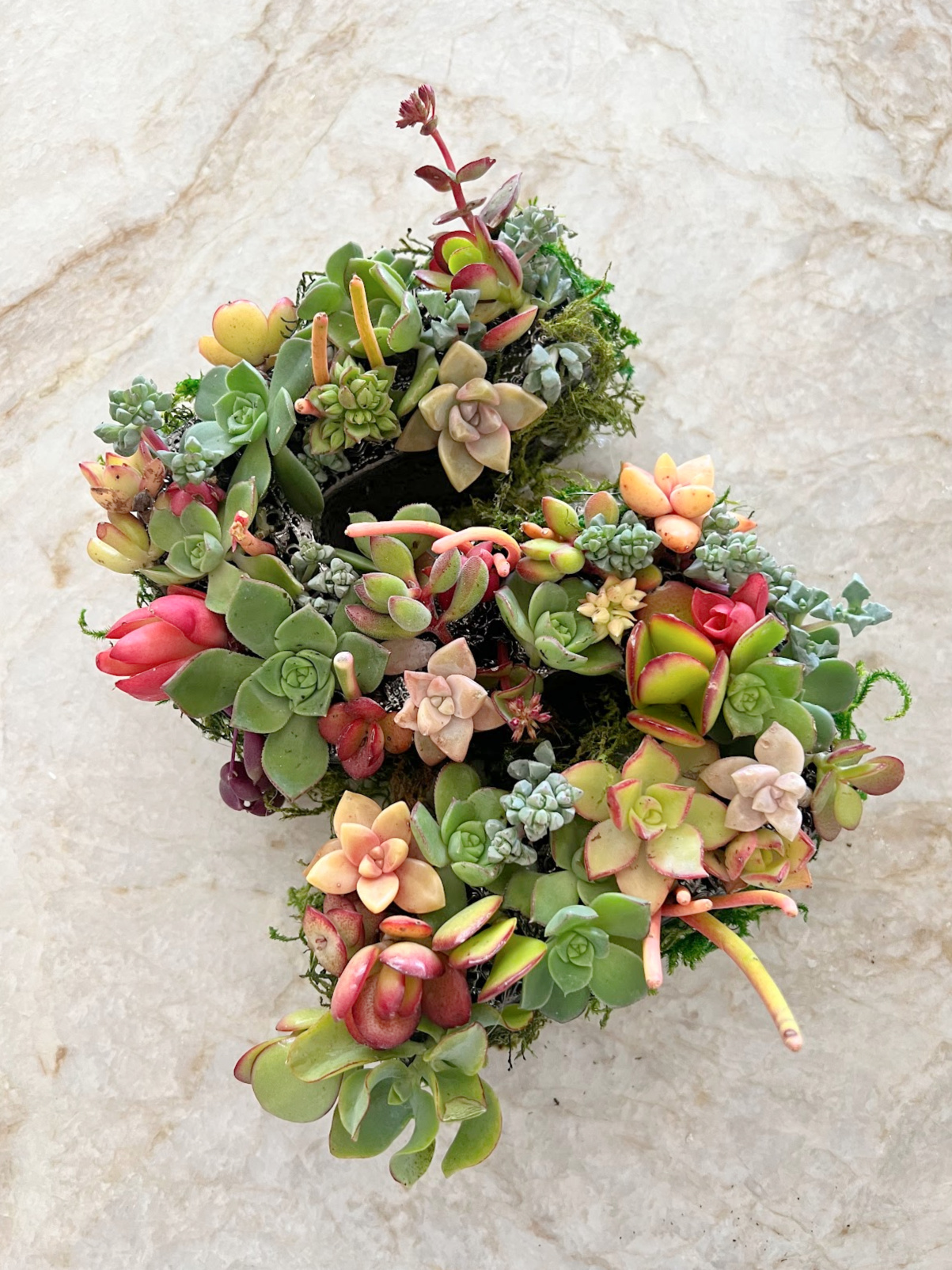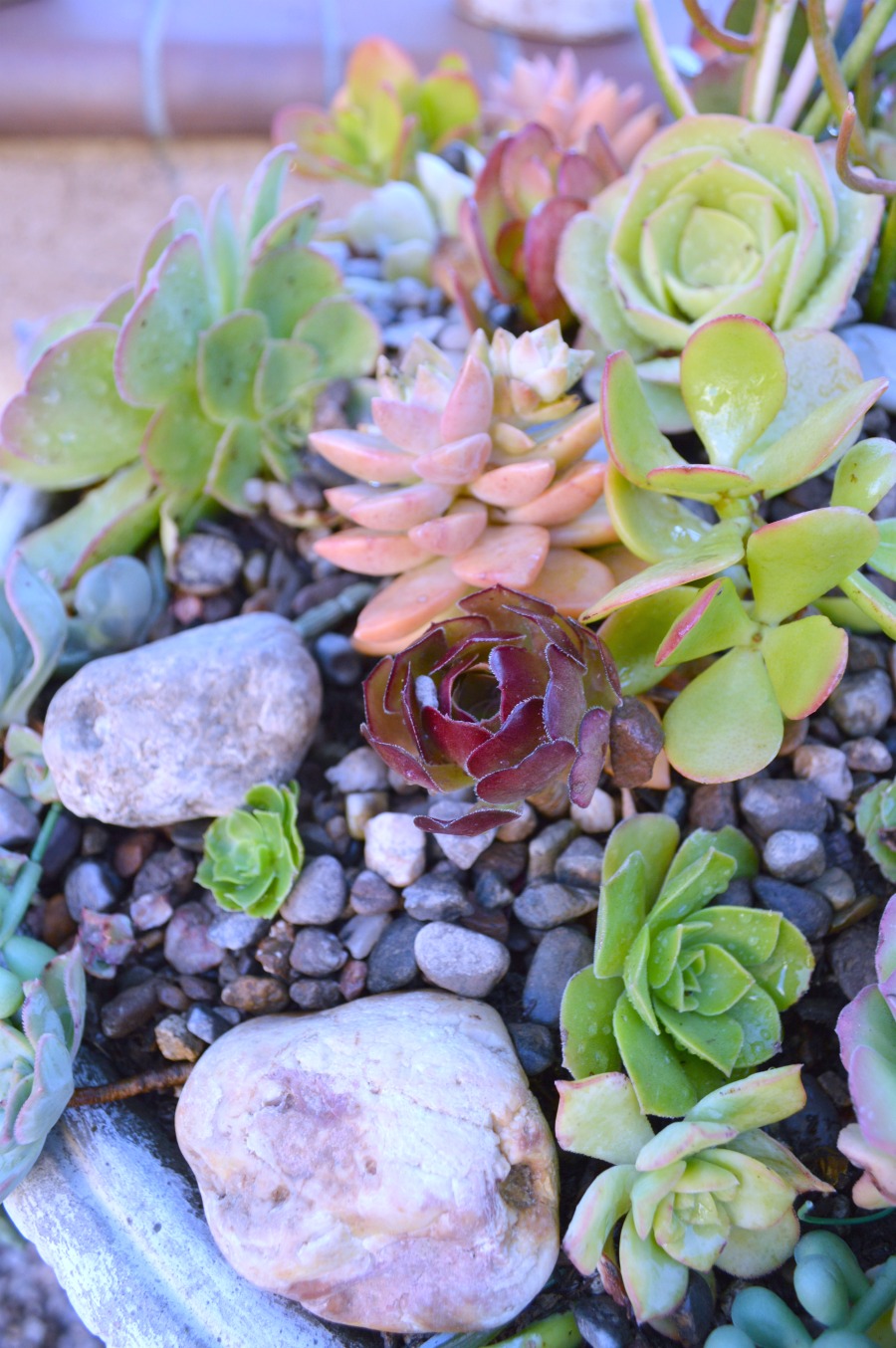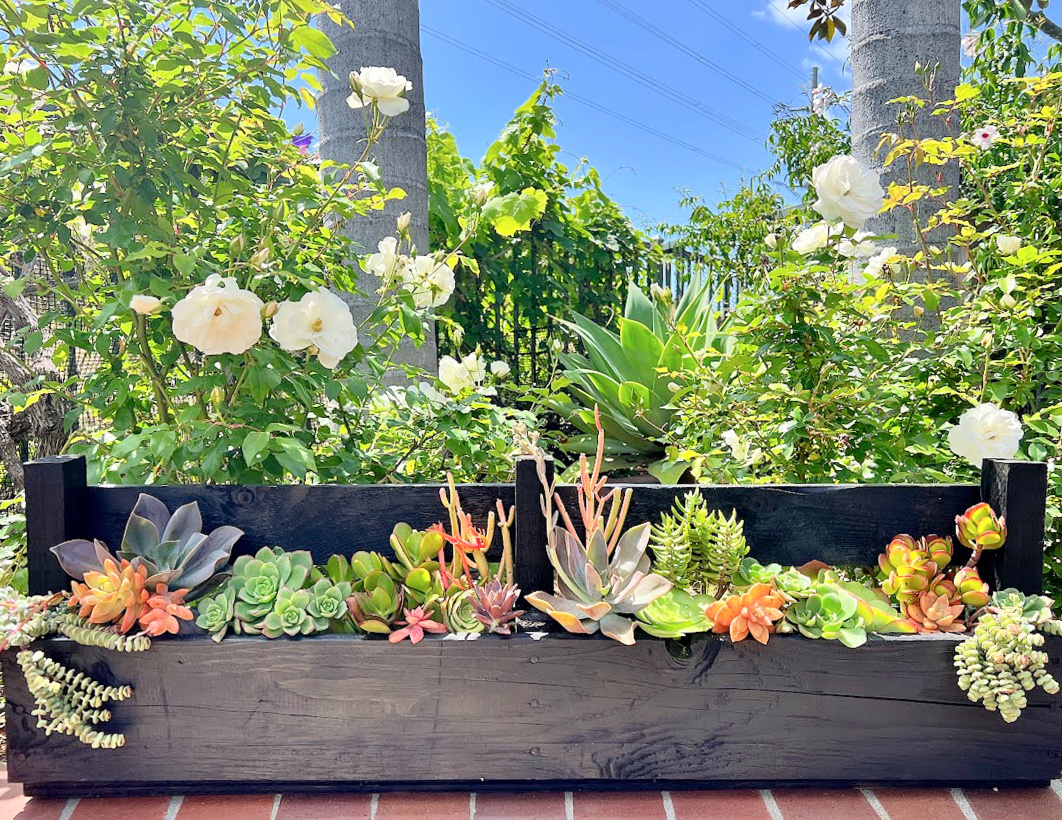Tips for How to Care For Succulents
Succulent plants are a popular type of plant that can thrive in a wide range of conditions, are low maintenance, and you don’t need a green thumb to keep them alive. Healthy succulents require some specific care to keep them thriving, however, for the most part, they are pretty difficult to kill and do well throughout all four seasons. One of my favorite things about succulents is they Propagate so easily. I honestly don’t remember the last time I purchased a succulent, I simply clip a stem and replant, it’s so simple!
If you have been a reader for a while, you know I love succulents, I have created so many projects with them, so I thought it was about time to create a post about caring for succulents. This was my latest creation, creating a succulent wall planter with a thrifted picture frame.
- Watering: Succulents don’t need to be watered very often, less water is better than too much water, as they store water in their leaves and stems. Excess water can actually harm them, so it’s important to let the soil dry out completely before watering again. Typically, you should water your succulents once every 1-2 weeks, but this can vary depending on the climate and the size of your plant. It’s better to underwater than overwater. Sometimes a light spritz of water with a spray bottle is all they need, you just don’t want soggy soil.
- Light: Succulents prefer bright, indirect sunlight. If you’re keeping them indoors, sunny windows that get enough light but not too much light are perfect. If you’re keeping them outside, make sure they’re in a spot where they’ll get plenty of sun but not be exposed to direct full sun for prolonged periods, especially during the hottest parts of the day. I have found some of my succulents get brown spots if in direct sunlight during the hot summer months.
- Soil: Succulents need soil that’s well-draining and porous, to prevent their roots from sitting in water. You can buy special potting mix like cactus mix, or make your own by mixing regular potting soil with sand, perlite, or vermiculite. You can find all of these at your garden centers.
- Temperature: Succulents prefer warm temperatures, but they can tolerate cooler temperatures as well. If you’re keeping them indoors, try to keep the temperature between 60-80°F (15-27°C). If you’re keeping them outside, be mindful of temperature fluctuations and protect them from extreme cold or hot weather.
- Fertilizer: Succulents don’t need a lot of fertilizer, but you can give them a boost during the growing season (usually spring and summer) by using a balanced fertilizer. Be sure to follow the instructions on the package, as over-fertilizing can harm your plant.
- Pruning: Succulents don’t usually require pruning, but you can remove any dead or damaged leaves to keep your plant looking its best. I usually go in a remove any overgrowth a few times a year.
- Good Drainage: Succulents love well-drained soil, If your pots do not have a drainage hole, there are a few ways around it. You can add a layer of rocks, pebbles, stones, or pumice at the bottom of the pot, to create a layer for drainage. This can help prevent root rot by allowing excess water to drain out of the soil and into the rocks at the bottom.
Propagating succulents is relatively easy and can be done in several ways. Here are a few common methods:
- Leaf-cutting: Take a healthy leaf from the parent plant, making sure to include the entire leaf including the base. Allow the cutting to callus over for a few days to prevent it from rotting. Then, plant the cutting in a well-draining soil mix and water it sparingly. Over time, new roots should develop from the base of the leaf, and a new plant will grow.
- Stem cuttings: I love this method! Cut a section of the stem from the parent plant and allow it to callus over for a few days. Then, plant the cutting in a well-draining soil mix and water it sparingly. Over time, new roots should develop from the cut end of the stem, and a new plant will grow. It’s so simple and so rewarding!
- Division: For succulents with multiple rosettes, gently remove one or more rosettes from the parent plant, making sure to include some roots. Plant the rosettes in a well-draining soil mix and water sparingly.
- Offsets: Some succulents produce small offsets or “pups” around the base of the parent plant. Gently remove these offsets and plant them in a well-draining soil mix.
This took about 9 months but look how much grew, I have even had to trim it back
A general rule when propagating is to avoid overwatering or too much moisture to the newly propagated succulent until it has established roots and shows signs of growth. It’s also important to provide enough sunlight but indirect light to the new plant and to avoid exposing it to extreme temperatures or drafts.
I just planted these this weekend and I can’t wait to see what happens over the next few months!
There are so many different varieties of succulents some of my favorites:
Aloe vera
Panda plant
String of bananas
String of pearls
Snake plants (I have a post coming up on these very soon)
Burro’s Tail
Hens-and-Chicks
Zebra Haworthia
Jade Plant
Ready to see more of my succulent ideas, just click on the pictures below that peek your interest, thank you so much for stopping in today!


